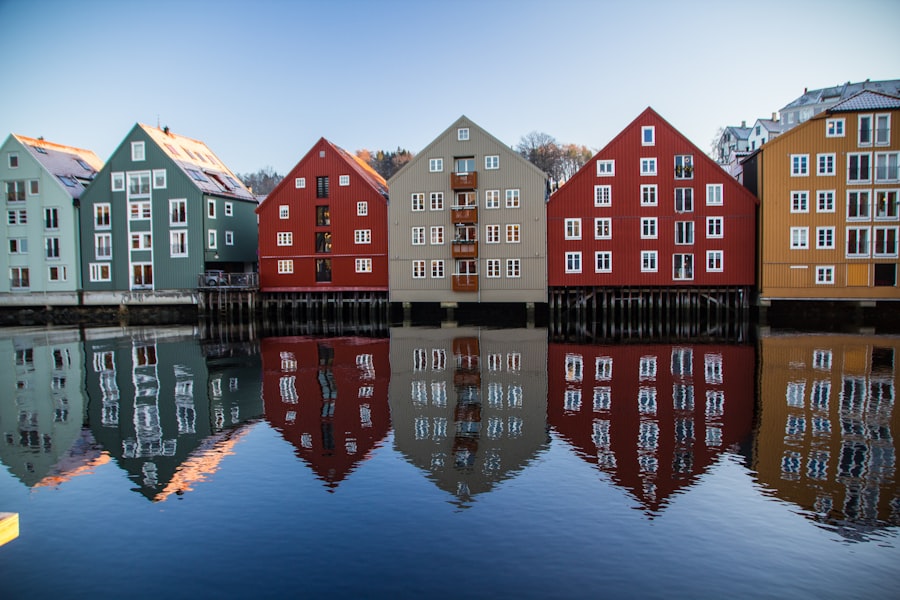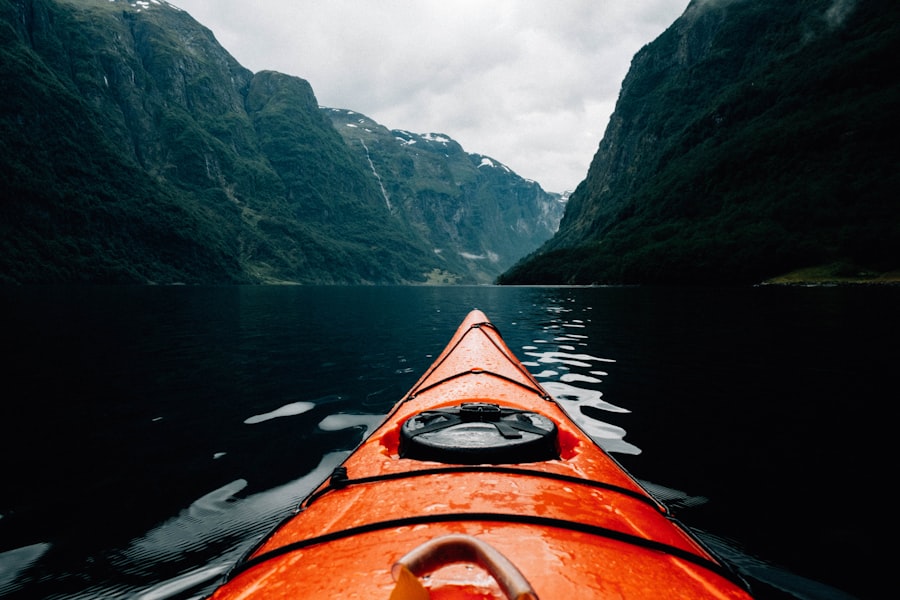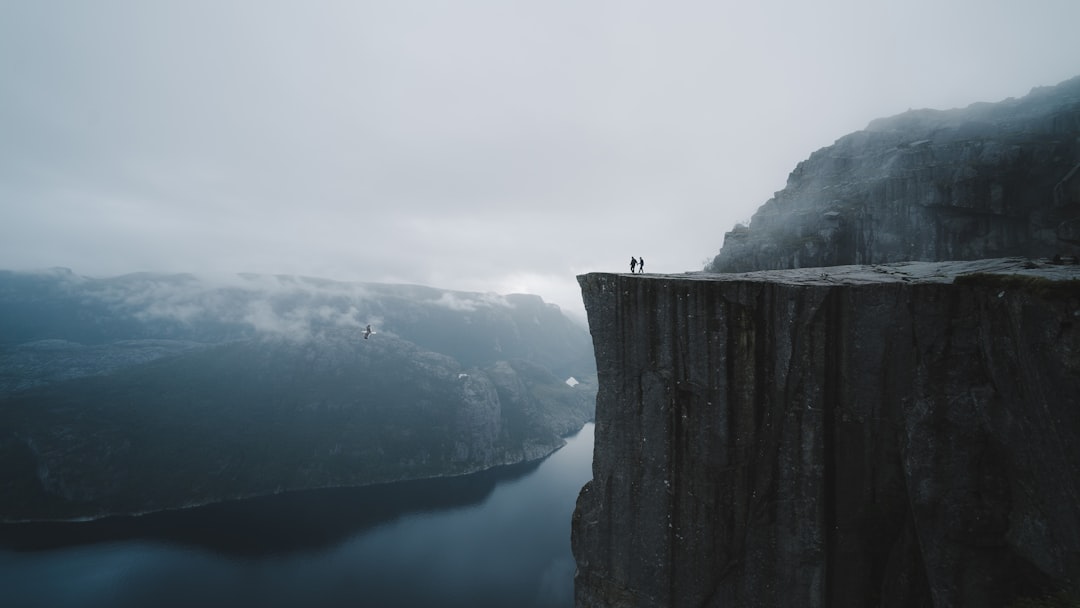The Norwegian winter is a phenomenon that captivates and challenges those who experience it. Stretching from late November to early March, this season is characterised by its long, dark nights and stunning landscapes blanketed in snow. The northern regions of Norway, particularly above the Arctic Circle, experience polar nights where the sun does not rise for weeks on end.
This unique aspect of winter can be both enchanting and daunting, as the absence of sunlight can affect mood and energy levels. However, the beauty of the snow-covered fjords and the ethereal dance of the Northern Lights provide a magical backdrop that makes winter in Norway truly special. Understanding the nuances of the Norwegian winter is essential for anyone considering a visit or relocation.
The climate varies significantly across the country, with coastal areas experiencing milder temperatures due to the Gulf Stream, while inland regions can plunge into severe cold. This diversity in weather patterns means that one must be prepared for a range of conditions, from icy winds to heavy snowfall. Embracing the winter season in Norway requires an appreciation for its stark beauty and an understanding of how to navigate its challenges. Book your 1-hour strategy session with Norway Relocation Group today.
Summary
- Norwegian winters are long, dark, and cold, but understanding the unique climate and embracing the concept of “koselig” can make the season more enjoyable.
- Dressing in layers with wool and thermal materials is essential for staying warm in the Norwegian winter, along with proper footwear and accessories like hats and gloves.
- Embracing “hygge” or the feeling of coziness and contentment is a key part of Norwegian culture, and can be achieved through warm blankets, candles, and spending time with loved ones.
- Staying active in the winter is important for physical and mental well-being, and Norwegians enjoy activities like skiing, ice skating, and winter hiking.
- Winter in Norway offers a variety of activities such as dog sledding, ice fishing, and visiting Christmas markets, providing opportunities to embrace the season and create lasting memories.
- Eating seasonal foods like root vegetables, hearty stews, and hot drinks is a key part of Norwegian winter culture, providing comfort and nourishment during the cold months.
- Managing the darkness in the winter months can be challenging, but using light therapy, spending time outdoors, and staying connected with others can help combat seasonal affective disorder.
- Creating a cozy home with soft lighting, warm textiles, and inviting spaces can help make the winter months more enjoyable and provide a sanctuary from the cold weather.
- Connecting with others through social gatherings, community events, and outdoor activities can help combat feelings of isolation and loneliness during the winter.
- Practicing self-care through activities like meditation, hot baths, and indulging in hobbies can help maintain mental and emotional well-being during the long winter months.
- Planning for spring by engaging in activities like gardening, making travel plans, and setting goals can provide a sense of hope and anticipation for the warmer months ahead.
Dressing for the Cold
Dressing appropriately for the Norwegian winter is crucial for comfort and safety. Layering is the key to staying warm, as it allows for flexibility in adjusting to changing temperatures throughout the day. A good base layer made from moisture-wicking materials will keep sweat away from the skin, while insulating layers such as fleece or wool provide warmth.
Finally, a waterproof and windproof outer layer is essential to protect against the elements. Accessories like hats, gloves, and scarves are equally important, as they help to retain body heat and shield against biting winds. Footwear also plays a significant role in winter attire.
Insulated, waterproof boots with good traction are necessary for navigating icy paths and snowy terrain. It’s advisable to invest in high-quality winter gear that can withstand the harsh conditions, as this will not only enhance comfort but also ensure safety during outdoor activities. By dressing appropriately, one can fully enjoy the beauty of Norway’s winter landscape without being hindered by the cold.
Embracing Hygge

Hygge, a Danish concept that has gained popularity in Norway, embodies a sense of coziness and contentment that is particularly relevant during the long winter months. It encourages individuals to create a warm and inviting atmosphere in their homes, fostering a sense of well-being and relaxation. Embracing hygge involves simple pleasures such as lighting candles, snuggling under blankets with a good book, or enjoying a warm drink by the fire.
This philosophy promotes mindfulness and encourages people to slow down and appreciate the little things in life. Incorporating hygge into daily routines can significantly enhance one’s experience of winter in Norway. It’s about finding joy in the mundane and creating moments of comfort amidst the cold and darkness.
Whether it’s hosting a gathering with friends over homemade pastries or indulging in a quiet evening of reflection, hygge serves as a reminder to cherish these moments of warmth and connection during the chilly months.
Staying Active
Staying active during the Norwegian winter is essential for both physical health and mental well-being. The cold weather should not deter one from engaging in outdoor activities; rather, it presents an opportunity to explore new sports and hobbies. Skiing, both cross-country and downhill, is immensely popular in Norway, with numerous trails and resorts catering to all skill levels.
Snowshoeing and ice skating are also fantastic ways to enjoy the winter landscape while getting some exercise. For those who prefer indoor activities, many communities offer facilities for swimming, gym workouts, or group fitness classes. Staying active not only helps combat the winter blues but also fosters a sense of community as individuals come together to share their interests.
By embracing an active lifestyle during this season, one can maintain energy levels and enhance overall well-being.
Exploring Winter Activities
Norway offers an abundance of winter activities that cater to various interests and skill levels. From thrilling adventures like dog sledding and snowmobiling to more serene pursuits such as snowshoeing through tranquil forests, there is something for everyone to enjoy. The breathtaking scenery provides a stunning backdrop for these activities, making them even more memorable.
For those seeking cultural experiences, many towns host winter festivals that celebrate local traditions with music, food, and crafts. These events provide an excellent opportunity to immerse oneself in Norwegian culture while enjoying the festive atmosphere. Whether one prefers adrenaline-pumping adventures or leisurely explorations, Norway’s winter activities promise unforgettable experiences that showcase the beauty of this season.
Eating Seasonal Foods

The Norwegian winter brings with it a delightful array of seasonal foods that reflect the country’s culinary heritage. Traditional dishes often feature hearty ingredients designed to provide warmth and sustenance during the cold months. Root vegetables such as potatoes, carrots, and turnips are staples in many winter recipes, often paired with rich meats like lamb or game.
Dishes like fårikål (lamb stew) or lutefisk (dried fish) are popular choices that highlight Norway’s unique flavours. Moreover, winter is an excellent time to indulge in comforting baked goods. Traditional pastries like krumkake or pepperkaker (gingerbread cookies) are often enjoyed during festive gatherings or as sweet treats on chilly afternoons.
Embracing seasonal foods not only nourishes the body but also connects individuals to Norway’s rich culinary traditions, making meals an integral part of the winter experience.
Managing the Darkness
The darkness of the Norwegian winter can be challenging for many individuals, particularly those unaccustomed to such long nights. However, there are various strategies to manage this aspect of the season effectively. One approach is to maximise exposure to natural light whenever possible; this can be achieved by spending time outdoors during daylight hours or utilising light therapy lamps indoors.
These lamps mimic natural sunlight and can help alleviate symptoms of Seasonal Affective Disorder (SAD), which affects many during the darker months. Additionally, creating a routine that incorporates uplifting activities can help combat feelings of lethargy associated with prolonged darkness. Engaging in hobbies, socialising with friends, or pursuing creative projects can provide a sense of purpose and joy during this time.
By actively managing the darkness, individuals can cultivate a more positive outlook on winter life in Norway.
Creating a Cozy Home
Creating a cozy home environment is essential for thriving during the Norwegian winter months. This involves more than just physical comfort; it’s about fostering an atmosphere that promotes relaxation and warmth. Soft furnishings such as plush blankets, cushions, and rugs can transform a space into a sanctuary from the cold outside.
Incorporating warm lighting through lamps or candles adds to the inviting ambiance, making evenings spent indoors feel special. Personal touches also play a significant role in creating a cosy home. Displaying cherished photographs or artwork can evoke feelings of nostalgia and happiness, while incorporating elements from nature—such as pinecones or branches—can bring a touch of the outdoors inside.
By curating a space that reflects personal style and comfort, one can create an oasis that makes winter feel more manageable and enjoyable.
Connecting with Others
The importance of social connections cannot be overstated during the long winter months in Norway. Engaging with friends and family provides emotional support and fosters a sense of belonging that is vital for mental health. Organising gatherings—whether casual get-togethers or festive celebrations—can help combat feelings of isolation that may arise during this season.
Moreover, joining local clubs or community groups centred around shared interests can facilitate new friendships and connections. Whether it’s participating in sports teams, book clubs, or art classes, these activities provide opportunities to meet like-minded individuals while enjoying shared experiences. By nurturing social connections during winter, one can create a supportive network that enhances overall well-being.
Practicing Self-Care
Practising self-care is crucial for maintaining mental health during Norway’s harsh winters. This involves prioritising activities that promote relaxation and rejuvenation amidst busy schedules or social obligations. Simple practices such as taking long baths, meditating, or engaging in creative pursuits can significantly enhance one’s mood and outlook on life.
Additionally, setting aside time for personal reflection can be beneficial during this introspective season. Journaling thoughts or goals can provide clarity and foster personal growth while navigating the challenges of winter life. By prioritising self-care routines tailored to individual needs, one can cultivate resilience and positivity throughout the colder months.
Planning for Spring
As winter gradually gives way to spring, it’s essential to embrace this transition with optimism and anticipation. Planning for spring involves not only looking forward to warmer weather but also setting goals for personal growth and new experiences. This could include outdoor activities such as hiking or gardening that become more accessible as snow melts away.
Moreover, spring offers an opportunity to reflect on lessons learned during winter and how they can inform future endeavours. Whether it’s pursuing new hobbies or strengthening social connections made during the colder months, embracing change can lead to exciting possibilities ahead. As one prepares for spring’s arrival, it’s important to carry forward the resilience built during winter while remaining open to new adventures.
In conclusion, navigating life during Norway’s winter requires adaptability and an appreciation for its unique beauty. From understanding how to dress for the cold to embracing hygge and staying active, each aspect contributes to a fulfilling experience during this season. The Norway Relocation Group plays an invaluable role in helping newcomers acclimatise to these changes by providing resources and support tailored specifically for those transitioning into life in Norway.
Their expertise ensures that individuals not only survive but thrive amidst the challenges of winter living—ultimately fostering a deeper connection with this stunning country throughout all its seasons.
Book your 1-hour strategy session with Norway Relocation Group today

